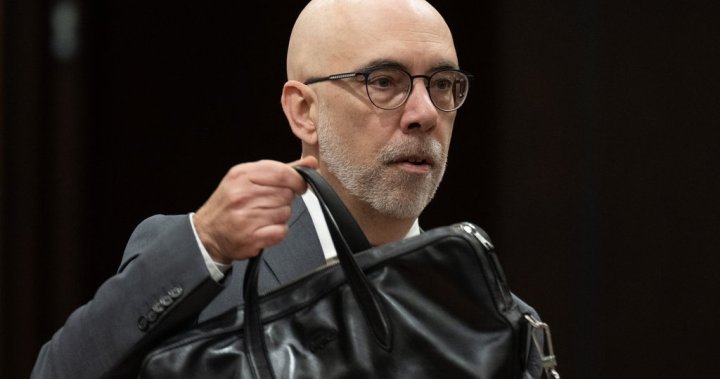The parliamentary budget officer said Thursday he expects the federal government’s deficit will balloon this year thanks to ramped-up defence spending — but without a spring budget or more clarity from Ottawa, he can’t say for sure.
Yves Giroux, the government’s fiscal watchdog, issued a new economic and fiscal update Thursday that omits the usual deficit projections for future years.
Giroux said in an interview Thursday that the lack of a spring budget leaves him unable to offer a concrete analysis to Parliamentarians about the sustainability of the government’s finances.
“Being the parliamentary budget officer, not having a budget is a big gap,” he said.
Giroux said his office could use the Liberals’ costed spring election platform as a basis for its analysis, but those plans have already shifted just a few weeks into the new government’s tenure.
Prime Minister Mark Carney announced plans earlier this month to reach the NATO defence spending target of two per cent of GDP this fiscal year with $9.3 billion in new funding — a rapid expansion of his own previous promise to hit those levels by the end of the decade.
The prime minister also promised $4.3 billion in aid for Ukraine at the G7 summit earlier this week.

Get daily National news
Get the day’s top news, political, economic, and current affairs headlines, delivered to your inbox once a day.
In pre-election estimates that did not account for the impacts of the trade war, the PBO predicted the federal deficit would come in at $42 billion for this fiscal year. Based on new spending announced since then, Giroux said he now pegs that figure at between $60 billion and $70 billion.
The final number could be lower, Giroux said, if the government implements cost cutting somewhere this year. But he noted Ottawa’s revenues are also under pressure.
The PBO expects economic growth to stall in the second quarter of the year as Canada’s trade war with the United States sinks exports.
The federal government also has introduced plans for a one-percentage-point cut to the bottom income tax bracket, the net cost of which the PBO pegged at $28 billion over five years in a separate report released Wednesday.
Giroux said Thursday he also can’t properly assess whether the federal government is on track to meet its fiscal targets because the Liberals haven’t defined their new budget benchmarks.
Carney announced a plan before the spring election to split Ottawa’s budget into operating and capital streams, and to balance the operating side in three years.
Giroux said in an updated economic and fiscal monitor report that the Liberals haven’t yet said what will be included in this operating budget.
“In the absence of a clear set of criteria as to what would constitute operating versus capital spending, it’s not possible to determine whether they would be on track to meet that,” he said.
Parliamentarians “may wish to seek additional clarity” on how the government intends to define these measures and keep federal finances stable, Giroux’s report concludes.
The government’s old fiscal anchors were based on keeping annual budget deficits below one per cent of GDP and maintaining a declining debt-to-GDP ratio over the medium term.
The PBO report notes that the federal government could hit its operating budget targets but still see the debt-to-GDP ratio rise due to additional borrowing to fund, for example, accelerated military spending.
“The debt-to-GDP ratio being on the declining trend, it’s not clear that would still be met if that was to still be the anchor, considering the recent announcements for defence spending,” Giroux said. The same goes for keeping deficits at one per cent of GDP, he added.
The Liberal government has had a busy first few weeks, Giroux said, with King Charles’ visit for the throne speech, the G7 summit, the upcoming NATO summit in Europe and a trade war with the U.S.
But that’s no excuse to not publish some kind of fiscal update, he said.
“We would have expected, at the very least, an economic and fiscal update to be tabled before the House rises,” Giroux said. “And I’m confident that the good public servants at the Department of Finance would have been able to provide that type of information to ministers for them to table in the House or in another forum.”
The PBO does say the federal government’s deficit for the last fiscal year likely came in at $46 billion, roughly $4.3 billion lower than estimates in March, thanks in part to higher corporate tax revenues and the imposition of counter-tariffs on the United States.
The Canadian Press reached out to Finance Minister François-Philippe Champagne for comment but has not yet received a response.
© 2025 The Canadian Press
Read the full article here

